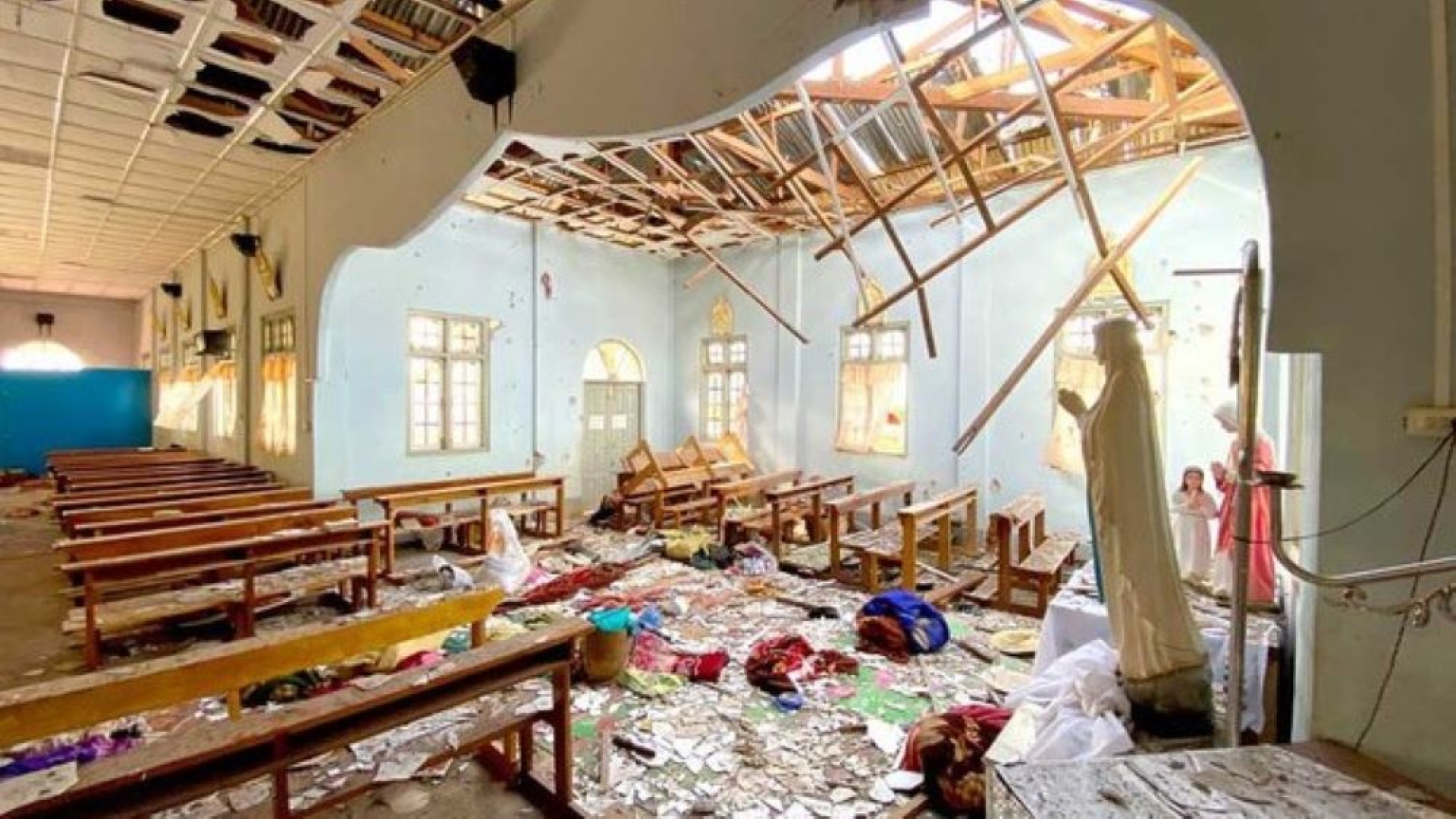Myanmar: Civil War Continues after Three Years

At least 107 religious buildings, including 67 Christian churches, have been destroyed by the Burmese army since the military junta rose to power on February 2, 2021, in Chin region alone. This is what the report published by the NGO Myanmar Witness on January 22, 2024, reveals.
Since the coup d’état of February 2, 2021, religious buildings in Myanmar have been greatly affected by the conflict. The investigation which was recently published by Myanmar Witness was most interested in the destruction of churches in Chin, the Burmese State that is majority Christian.
The report, created by a commission of legal experts, sorts the numerous data collected--witness statements, backed up by photographic evidence--according to the damage suffered, distinguishing air strikes from damage caused by artillery, arson, and looting.
This detailed analysis reveals an evolution in the abuses perpetrated in the course of 36 months of war: air strikes became the principal cause of damage to religious buildings in 2023, and in the same time period, the number of arson attacks and artillery strikes decreased compared to 2021 and 2022.
This trend reflects the growing loss of ground control of the junta in power in Chin State, as all observers of the conflict confirm. As for the perpetrators of these air strikes, they seem to be attributable to the regular military forces, since the Myanmar Air Force (MAF) maintains control of the skies in the country.
Although the forces opposed to the junta have drones, they do not have payloads large enough to explain the extent of the damage caused to religious buildings.
According to Benedict Rogers, team leader of Christian Solidarity Worldwide, an NGO for the defense of Christians, the destruction of churches in Chin State is part of a policy of intentional targeting on the part of the Burmese military junta: “the bombing of churches is more than simply collateral damage. By targeting churches and other places of worship, the army is directly targeting what constitutes the Christian identity of these communities,” he explains.
This is a strategy implicitly accepted by the army: one of its leaders publicly stated that it only attacks “legitimate war objectives,” which includes Christian sanctuaries.
But the situation is deteriorating for the government forces: on January 5, the opposition coalition succeeded in capturing the city of Laukkai, on the Chinese border, after several thousand soldiers and officers of Tatmadaw--the name of the Burmese army--surrendered their weapons.
This “marks the largest surrender in the history of Myanmar’s military,” Burmese expert Ye Myo Hein reacted on X (formerly Twitter) on January 6. This is a victory to which the Christian militias especially contributed, and which will probably lead to retaliation from the junta.
For three years now, Myanmar has been mired in a bloody conflict combining political interests and ethnic and religious conflicts, the outcome of which appears more indecisive than ever.
(Sources : Myanmar Witness/Le Monde – FSSPX.Actualités)
Illustration : Radio free Asia





